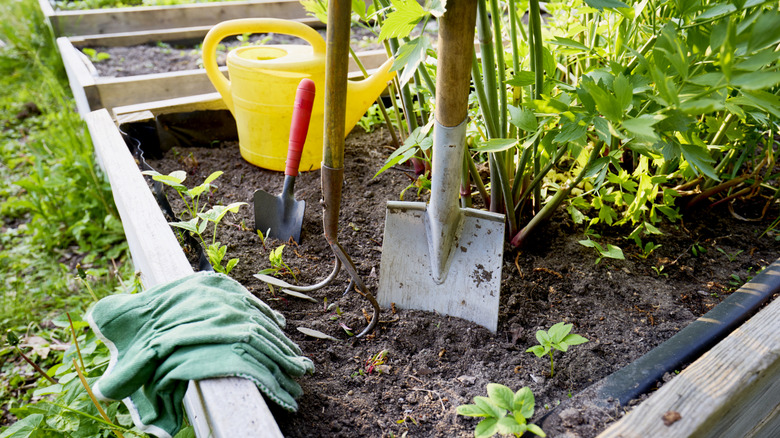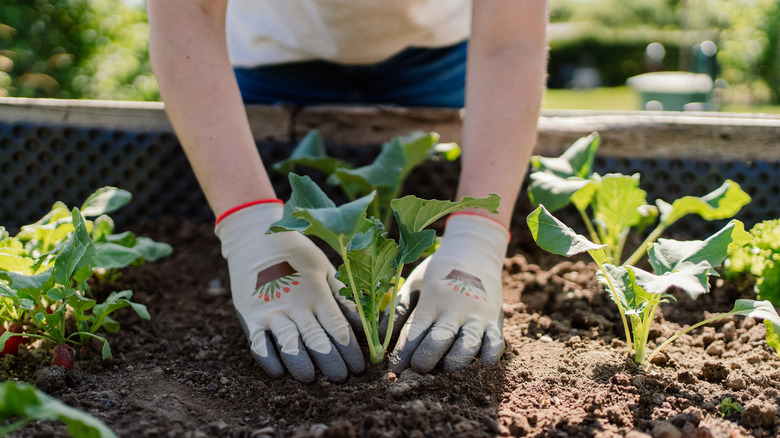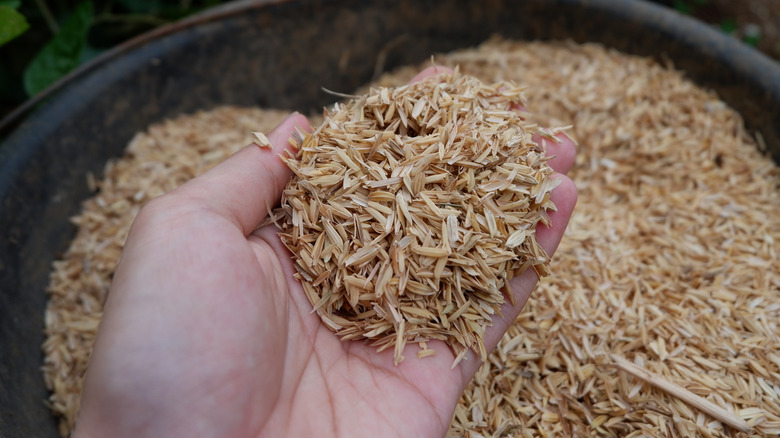The Simple Addition Your Raised Garden Beds Need For Better Drainage & Healthy Soil
We may receive a commission on purchases made from links.
There's nothing better than reaping the hard-earned rewards of growing your own food. Salads with homegrown cucumbers and tomatoes or a pie made from a pumpkin that started as a simple seed just taste better, right? But maybe you live in a place where growing food — or even flowers — right in the ground isn't an option; digging through gravel or fighting clay isn't exactly the easiest approach to home gardening. You can turn, then, to raised garden beds, a great option for gardening in places you wouldn't otherwise be able to grow — even on a patio or deck.
The thing about raised beds, however, is that the dirt you bring in to fill them often isn't composed of the same materials as the topsoil you'd find in a garden. Garden soil, which is often used in container gardens and raised beds, can be heavy and moisture-retaining, an unfortunate recipe for root rot. And everyone knows that the best type of soil to fill raised gardens beds with when growing veggies is a mix of different things. But there's a cheap and easy way to lighten your garden soil and add drainage: rice hulls. Rice hulls, the tiny outer layer of rice grains, are easy to find online and act similarly to perlite or vermiculite in soil, making them the perfect addition to your raised beds.
How to use rice hulls and why they work
It might seem like a good idea, but you might want to avoid putting gravel and rocks in a raised garden bed as they can actually slow the flow of water through your soil. Rice hulls, on the other hand, aid in drainage and can come in handy in other applications around your garden, like when you're mulching or composting. If you are looking to increase drainage in your soil, supplement with 10 to 50% rice hulls. Need to suppress weeds or conserve moisture? Simply spread a thin layer of rice hulls over the top of your soil. And if you need something to add to your compost, rice hulls are great for — you guessed it — aeration and nutrients.
So how do rice hulls work? Because of their light weight and irregular shape, they create air pockets in the soil for water to move through, improving drainage. As rice hulls break down, they release nitrogen into the soil, a benefit to fruits, veggies, and flowers alike. Additionally, rice hulls contain silica, which strengthens plant cells and makes them hardier in the face of drought and low temperatures — perfect for spring or fall gardening.
Good for your garden and the environment
Many soil additives, while beneficial to your cucumbers or tomatoes, aren't exactly great for the environment. Peat moss is a non-renewable resource and mining perlite — also non-renewable — expends a ton of energy. Rice hulls are the renewable by-product of rice production, meaning that as long as we're producing rice, we're also producing rice hulls. And, unlike perlite, rice hulls are biodegradable, meaning that you won't be finding them mixed into your soil year after year.
That does mean you'll have to purchase and add more rice hulls to your soil after a couple of years, but luckily, they're both easy to use and easy on the pocketbook. You can pick up an 8-quart bag of Organic Mechanics Pure Rice Hulls on Amazon for just over $20, and if you don't mind hitting the store, Target, Lowe's, and Walmart all carry the soil additive as well. Looking to make your garden beds even greener? Here's how to make your garden more sustainable, according to an expert.


